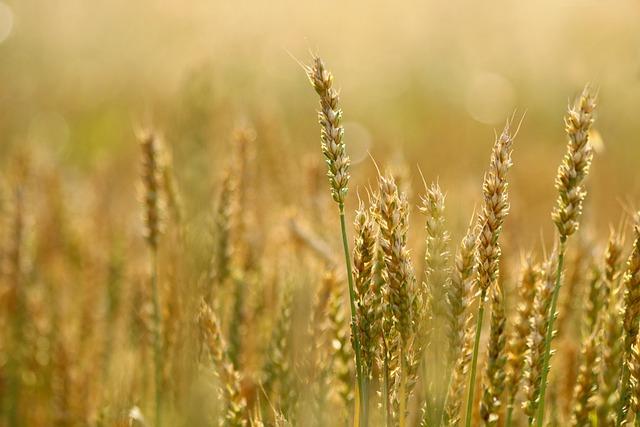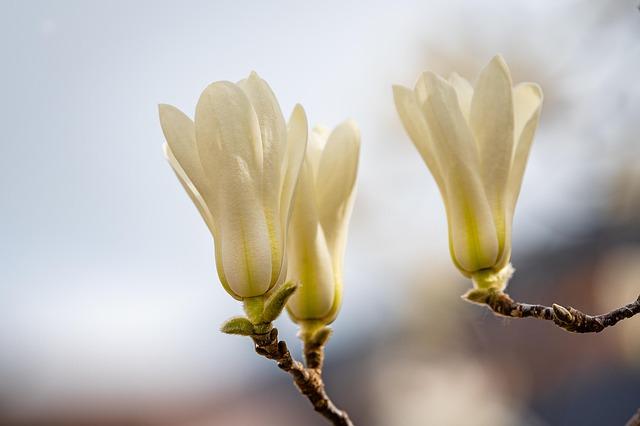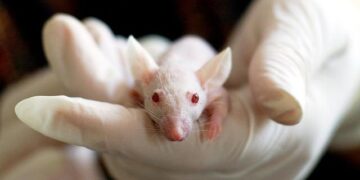In the ever-evolving world of agriculture, innovation holds the key to overcoming challenges that threaten food security and environmental sustainability. At the forefront of this technological revolution are engineers from the Massachusetts Institute of Technology (MIT), who have developed a groundbreaking method designed to enhance the effectiveness of pesticides. This pioneering technology promises to revolutionize how these chemicals adhere to plant leaves, ensuring they remain in place longer and work more efficiently. By addressing the persistent issue of pesticide runoff and volatilization, this development not only aims to boost crop yields but also seeks to minimize the environmental impact of agricultural practices. In this article, we will explore the details of this innovative solution, its potential implications for farming, and the broader context of sustainable agriculture.
Innovative Adhesive Technology: Revolutionizing Pesticide Application

The innovative adhesive technology developed by MIT engineers is set to transform the agricultural landscape by enhancing the efficacy of pesticide application. Traditional methods often lead to a significant percentage of the pesticide runoff due to rain or irrigation, resulting in wastage and environmental concerns. The new formulation is not only robust but utilizes biodegradable materials to ensure minimal ecological impact while providing maximum adherence to plant leaves.
Key features of this cutting-edge adhesive technology include:
- Increased Retention: The adhesive allows pesticides to cling more effectively to foliage, reducing the frequency of reapplication.
- Environmentally Friendly: Components of the adhesive are derived from renewable resources, making it a sustainable choice for farmers.
- Enhanced Efficacy: By ensuring that pesticides remain on the plant surfaces longer, the technology can improve pest control and reduction in the overall amount of chemicals needed.
The technology merges the principles of chemistry and biology, enabling farmers to enhance productivity while practicing sustainable agriculture. Preliminary testing has revealed a noteworthy decrease in pesticide usage without compromising effectiveness. The potential these advancements hold for food production is immense, particularly as the agriculture sector adapts to challenges posed by climate change and increasing pest resistances.
Enhancing Crop Protection: The Science Behind MITs Breakthrough

In recent years, scientists at MIT have unveiled groundbreaking technology aimed at addressing a long-standing challenge in agriculture: how to make pesticides more effective and reduce their environmental impact. Traditional pesticides often wash away with rain or irrigation, leading to insufficient coverage and an increased need for reapplication. The innovative solution relies on a specially designed coating that enhances the adhesion of pesticides to plant leaves, resulting in greater retention and efficiency.
The key to this advancement lies in the development of a new type of biodegradable polymer that can be easily mixed with pesticides. This polymer forms a protective layer that not only binds the pesticide to the leaf surface but also allows for controlled release over time. As a result, the treatment becomes more effective, requiring less frequent applications. Key benefits of this technology include:
- Increased adherence: Pesticides remain effectively in place, minimizing loss due to environmental factors.
- Reduced chemical use: Farmers can apply lower quantities, decreasing costs and environmental impact.
- Improved crop health: Enhanced coverage helps protect plants against pests and diseases, promoting robust growth.
To further understand the implications of this technology, consider the potential economic and ecological benefits for farmers and the environment. A recent study comparing traditional pesticide application methods against those enhanced by the new polymer shows promising results:
| Pesticide Type | Application Frequency | Environmental Runoff | Total Crop Yield (%) |
|---|---|---|---|
| Traditional | 5 times/season | High | 75 |
| With MIT Polymer | 2 times/season | Low | 90 |
This table illustrates how the enhanced technology not only reduces necessary applications but also significantly increases overall yield, suggesting a promising future for sustainable farming practices. By marrying science and agriculture, this innovation stands to benefit not just farmers but also the broader ecosystem, paving the way for a more responsible approach to pest management.
Environmental Impact: Weighing Benefits Against Potential Risks

The recent technological advancement pioneered by MIT engineers offers intriguing advantages for agriculture by enhancing the adherence of pesticides to plant surfaces. This breakthrough could lead to improved crop yields and reduced pesticide runoff, thereby promoting more sustainable farming practices. By maximizing the effectiveness of pesticides, farmers can potentially use smaller quantities of chemicals while achieving the desired level of pest control, which presents significant benefits for both crop health and environmental conservation.
However, the increased efficacy of pesticides may also introduce potential risks that warrant careful consideration. Over-reliance on any technological advancement can lead to unforeseen ecological imbalances. For instance, improved pesticide retention might encourage excessive application, which, if not regulated properly, could lead to chemical accumulation in the soil and water systems, thus harming non-target species and disrupting local ecosystems. Reporting on these impacts becomes essential to navigate the intersection of agricultural innovation and environmental stewardship.
To better understand the balance between the benefits and potential hazards of this new pesticide technology, here is a summary of the pros and cons:
| Benefits | Potential Risks |
|---|---|
| Enhanced pesticide effectiveness | Risk of over-application |
| Reduced chemical runoff | Possible harm to non-target species |
| Increased crop yields | Soil and water contamination |
As stakeholders in agriculture contemplate the adoption of this innovative technology, it is crucial to engage in comprehensive assessments. Ensuring that farmers are educated about responsible usage can help mitigate risks while maximizing the advantages of this MIT-developed solution. Ongoing research and monitoring will be vital in addressing the long-term implications for both food production and environmental health.
Practical Implementation: Best Practices for Farmers Using New Coating Techniques

Farmers looking to enhance their crop protection strategies can benefit significantly from the advancements in coating techniques developed by MIT engineers. By ensuring pesticides adhere firmly to plant surfaces, farmers can reduce waste and improve efficacy. Here are some best practices to keep in mind:
- Understand the Coating Properties: Different crops and pests may require specific coating properties. Farmers should familiarize themselves with the characteristics of the new coatings to match them appropriately to their crops.
- Application Timing: Optimal timing is crucial. Applying coatings in the early morning or late afternoon can help achieve better adhesion, as these periods often experience lower wind and humidity.
- Mixing Techniques: Ensure that the new coating is mixed well with pesticides. Homogeneous mixtures are key to achieving uniform application across the crop.
Implementing these new coating technologies requires careful consideration of both environmental factors and crop types. To aid in decision-making, here’s a simple table summarizing some essential parameters:
| Crop Type | Best Coating Technique | Application Frequency |
|---|---|---|
| Leafy Greens | Spray Application | Every 2 weeks |
| Fruit Trees | Drip Application | Monthly |
| Cereals | Fogging Technique | As needed (based on pest levels) |
Monitoring the effectiveness of these techniques is essential for continuous improvement. Farmers should establish a routine to assess pest control outcomes and crop health following the application of the new coatings. Regular assessments can help identify patterns and optimize future applications, ensuring that both crop yield and environmental sustainability are maintained.
Closing Remarks
In a world where sustainable agriculture increasingly faces the challenges of pests and climate change, the innovative technology developed by MIT engineers serves as a beacon of promise. By enhancing the adherence of pesticides to plant leaves, this breakthrough not only aims to improve crop protection but also minimizes the environmental impact often associated with chemical applications. As we move forward, the fusion of engineering and agricultural science exemplified by this research paves the way for smarter, more effective farming practices. It invites us to envision a future where technology harmonizes with nature, enabling us to feed a growing population while preserving the planet’s delicate ecosystems. As the implications of this advancement unfold, we remain hopeful for its potential to foster a new era of resilience in agriculture, one where science and sustainability walk hand in hand.































